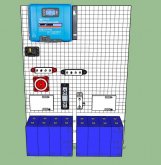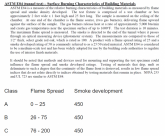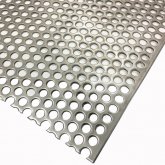iceledoar
Off Grid, Off Grid. Not even sometimes.
Sheetrock with a backer board behind.





Have to secure it with lots of fasteners to avoid vibration noise. You are not going to tear it with the weight of solar equipment. Especially since a more likely size to use is 2' x 2'.20 gauge steel is incredibly thin.
That should be fine. Plain plywood should be fine. I was thinking more about improving airflow to improve longevity of the electronics. The cooler you can keep electronics, the longer it is going to last.For the plywood battery compartment I'm putting together, I will use plywood. I am considering painting it with some heat resistant paint, like you would put on an exhaust gas manifold, which mine gets up to 1600°F. I may try POR15. I don't know if that will help, but it will make me sleep better.
That should be fine. Plain plywood should be fine. I was thinking more about improving airflow to improve longevity of the electronics. The cooler you can keep electronics, the longer it is going to last.
For the plywood battery compartment I'm putting together, I will use plywood. I am considering painting it with some heat resistant paint, like you would put on an exhaust gas manifold, which mine gets up to 1600°F. I may try POR15. I don't know if that will help, but it will make me sleep better.
I would add ventilation fans and rout the exhaust to the outside of the vehicle.That is something that worries me for the battery compartment I'm Building. I have 4 lead acid golf cart batteries that I will have two 2" vents in the top, and a third two inch vent in the bottom for air circulation. Outside that battery compartment is where my inverter and charge controller will be, and in AZ, its pretty hot in the summer. Not sure what to do to keep those two devices cool.
Your comment about the industrial look caught my eye and I wanted to do something like that, however I can’t seem to find any gray latex paint at HD/Lowes. All I found is a gray primer. What do you use? And do you prime first?I just use plywood or OSB on my garage walls because it is easier to attach sub panels and small devices to it. I do give it a coat of grey latex paint to give it an industrial look.
Yes in some cases I primed but for interior surfaces it is not as important. HD and Lowes can mix a gray color of your choice. They typically stock few actual colors.All I found is a gray primer. What do you use? And do you prime first?


